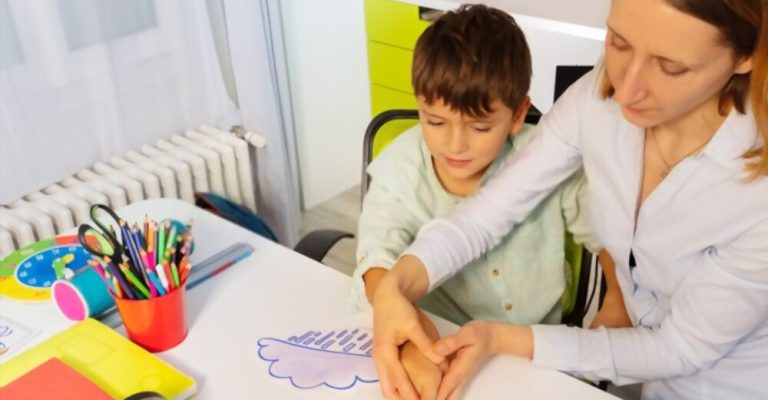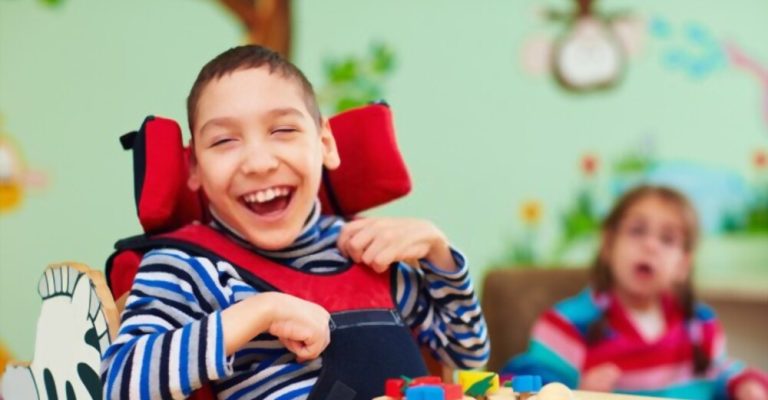
Cerebral palsy and autism may be two of the most commonly discussed neurological disorders in modern society, yet confusion still surrounds them.
What makes these conditions different from one another? How can families or individuals differentiate between the two?
In this blog post, we’re going to tackle that question head-on, exploring which characteristics distinguish cerebral palsy from autism – from physical symptoms to behavioral tendencies.
Join us as we explore how knowing the distinguishing factors between these two neurological conditions can help foster understanding. We can reate a better quality of life for those affected by either disorder and provide comfort that a correct diagnosis has been made.
Autism is a developmental condition characterized by social interaction, communication, and behavioral regulation impairments. Autism, often known as an autism spectrum disorder, is a group of disorders. It is marked by difficulties in social interaction, routine behavior, language, and nonverbal communication.
The Center for Disease Control and Prevention estimates that 1 in every 44 American children has autism.
There is not just one kind of autism but a spectrum of disorders primarily determined by a person’s genetic makeup and upbringing. An underlying genetic condition, such as Rett syndrome or fragile X syndrome, may cause ASD in certain kids.
Some people may be more likely to develop autism spectrum disorder due to a shift or mutation in their genetic makeup. Studies have also indicated that infections, medications, pregnancy issues, and air pollution may trigger autism spectrum disorder symptoms.
When someone has cerebral palsy, their condition mainly manifests in the areas of the brain responsible for motor control. It’s a group of conditions characterized by movement and muscle tone/posture abnormalities.
Cerebral palsy affects around 10,000 infants each year at birth. Given its prevalence, cerebral palsy is now the leading cause of childhood disability. Researchers in the United States estimated the prevalence of cerebral palsy among newborns to be 1.6% in 2022.
It is not clear why people with autism are more likely also to have cerebral palsy. However, the two conditions often occur together due to the parallels between them and other developmental abnormalities.
Birth injuries or injuries sustained soon after delivery may cause cerebral palsy. Autism, like Down syndrome, is a condition of brain development. However, its symptoms often become more noticeable around age 3, when a child’s language and social abilities have already lagged behind their peers.
Children with CP may also show indications of autism since both conditions are under the umbrella diagnosis of brain injury. Co-occurring autism and cerebral palsy may be difficult to diagnose in young children because of the wide range of severity between the two disorders.

The CDC reports that autism spectrum disorders co-occur in almost 7% of children with cerebral palsy. This characteristic is more prevalent in those who have CP but do not have spasticity. Children without cerebral palsy make up just a small percentage of those diagnosed with autism.
These conditions are not connected, although they often occur together and have a negative impact on a child’s growth and development. As we go on, we’ll take a closer look at the differences and similarities between these two states.
The etiology of both cerebral palsy and autism are distinct from one another.
Injuries to the neurodevelopment before, during, or soon after birth are the leading cause of cerebral palsy. Causes include delivery at an unsuitable stage, low blood oxygen levels, brain hemorrhage, illness, or a blow to the head.
The precise causation of autism is unclear; however, it is known that a combination of genetic and environmental variables has a role.
Based on hereditary characteristics, research reveals that the likelihood of both identical and fraternal twins developing autism is between 36% and 95%. The risk of having another child with autism for parents who already have one is 2% to 18%.
The parents’ age, pregnancy contact with toxins, early delivery, and respiratory failure all contribute to an increased likelihood of producing a child with autism. Its co-occurrence may be attributed to the fact that several of these variables can also induce CP.
Cerebral palsy and autism are both conditions that affect the nervous system. In contrast, the symptoms of each condition present in distinctive ways. The former causes handicaps in terms of mobility, whereas the latter causes difficulties in interacting with others.
Due to its impact on posture, stability, alignment, and coordination, cerebral palsy is classified as a motor impairment.
A person’s conduct and communication abilities are most impacted by autism.
Social and behavioral difficulties are not caused by CP, although they may affect a person with CP. Similarly, a diagnosis of autism may be made in the absence of motor deficits such as poor coordination, unusual gait characteristics, or convulsions.
Many instances of cerebral palsy have unidentified causes. However, some of the things that might put a kid at risk for having CP include the following:
If your first kid has autism, you have an increased chance of having another autistic child. Among them are:
Autism and cerebral palsy are both spectrum diseases. Therefore their manifestations vary from person to person.
Autistic traits that are often seen include:
Signs and symptoms of cerebral palsy are often described as follows:
Autism Spectrum Disorder (ASD) may be diagnosed with the use of the Diagnostic and Statistical Manual of Mental Disorders, Fifth Edition (DSM-5). The terms “developmental monitoring,” “developmental assessment,” and “complete developmental screening” all refer to these processes.
Physical examination, magnetic resonance imaging (MRI), cranial ultrasonography, electroencephalography (EEG) are part of CP diagnosis. Complete blood count, urine samples, skin testing, and assessment for vision, hearing, speech, intelligence, development, and mobility are all also used to diagnose cerebral palsy.

Incurable disorders like cerebral palsy and autism spectrum disorder is permanent and cannot be treated. But, your child’s quality of life may be greatly enhanced by teaching him or her to speak and carry out useful tasks.
doesn’t matter whether your baby has cerebral palsy, autism, or a combination of these conditions. There are a variety of therapy choices that may enhance their standard of living and enable them to acquire the skills they need to live a more meaningful life.
Some examples of management strategies that may aid in your child’s physical and psychological development are:
Your kid may benefit from physical therapy by exercising to increase his or her muscle strength, range of motion, balance, and coordination. It will also help him/her improve their ability to move around and perform daily activities independently.
Daily tasks like dressing, bathing, and sensory control may be taught to your kid via occupational therapy. Mostly, it focuses on increasing the patient’s functional skills and problem-solving capabilities.
Speech therapy may help your kid improve their ability to speak and interact socially with others. If your kid has difficulty understanding and using language, speech therapy can also help them understand and express themselves verbally.
To assist your kid in overcoming negative or harmful habits, cognitive behavioral therapy may be a good option. Teaching your kid how to better cope with their emotions, it may aid in developing the skills they need to interact positively with others.
Medications have been shown to be effective in managing and alleviating both cerebral palsy and autism symptoms. For example, muscles often stiff or spastic due to cerebral palsy may be relieved with medicine injections. In addition, drugs for anxiety and hyperactivity are two more ways to treat autism.
Each kid with cerebral palsy or autism needs individualized care that focuses on strengthening the areas in which they are struggling.
Motor deficiencies may be mitigated, and cognitive abilities can be enhanced with early treatment. In addition, children’s brains are more malleable than adults. It allows them to pick up new information and develop new abilities at a far faster rate.
Managing a kid with cerebral palsy and autism may be difficult. Still, therapies available can enhance your child’s quality of life and help your job as a caregiver smoother. Follow the specified therapy and medicines to help your child attain their greatest potential. With the proper support and care, your child may be able to lead a better life.